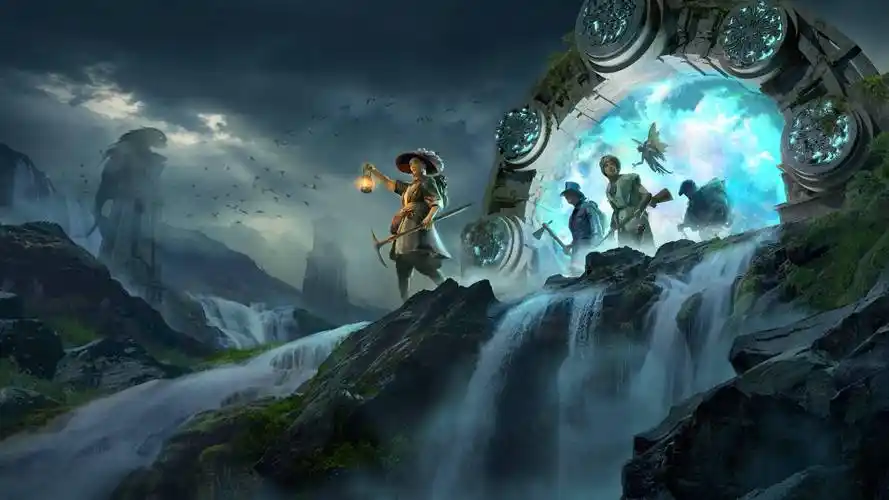Title: The Digital Crucible: Inside the "Cell Mutation Shelter Sign Installer Simulator VR" Mount Missions Expansion
The sterile, almost clinical, premise of the base game—Cell Mutation Shelter Sign Installer Simulator VR—was a stroke of perverse genius. It presented a universe ravaged by a biological apocalypse, not through the lens of a super-soldier or a desperate scavenger, but through the hyper-specific, bureaucratic role of a signage technician. Your job wasn't to fight the grotesque, mutated horrors; it was to ensure the surviving populace, huddled in underground shelters, knew where the bathroom was. It was a masterpiece of mundane horror. The new "Mount Missions" expansion doesn't just add new levels; it fundamentally re-contextualizes the entire experience, transforming a quirky simulator into a profound and unsettling commentary on duty, isolation, and the fragile architecture of civilization.
The expansion’s core mechanic is deceptively simple: you are now tasked with installing large-scale, external directional signs on the treacherous mountain ranges that now serve as the primary landmarks in the shattered world. These "Mount Missions" are a world away from the claustrophobic, fluorescent-lit corridors of the subterranean shelters. Donning your VR headset, you are immediately assaulted by the sheer scale of the environment. Icy winds howl, a constant, buffeting force that you must physically lean into. The sky is a perpetual twilight, stained with ominous, bio-luminescent hues from the lingering atmospheric contaminants. The silence is broken not by the guttural roars of beasts, but by the distant, echoing creak of shifting tectonic plates and the occasional, heart-stopping crack of a calving glacier.
This shift in environment is the expansion's first, and most brilliant, twist. The horror is no longer intimate and immediate; it's existential and environmental. The mutated flora and fauna are present—a pulsating, crystalline lichen that grows over rock faces, or distant, winged silhouettes circling a thermal vent—but they are hazards of the landscape, not primary antagonists. The real enemy is the vertigo as you rappel down a sheer cliff face, the numbness in your virtual fingers as you struggle to align a heavy metal bracket in a blizzard, and the crushing loneliness of being the only human for miles, a tiny, insignificant speck against a indifferent and wounded planet.
The gameplay loop is meticulously crafted to reinforce this theme. Each mission begins with a lengthy ascent, often using a rugged, all-terrain vehicle that handles like a dream in VR, its vibrations and engine whine perfectly simulated. You must navigate using a topographical map and a weak GPS signal, finding a safe path to the coordinates. Upon arrival, the real work begins. The installation process is a complex ballet of physics and patience. You must drill into rock, set explosive anchor bolts (a terrifyingly satisfying process in VR), and assemble the large, welded sign panels. The physics engine is punishingly realistic; a sign installed crookedly will sway dangerously in the wind, its groaning metal causing your stomach to lurch. Failure isn't a game over screen; it's the visceral, humiliating sight of your hours of work tearing free from the mountain and cartwheeling into the abyss below.

This is where the "Simulator" aspect transcends its genre. You aren't just clicking prompts. You are feeling the weight of the drill, the resistance of the rock, the strain in your shoulders as you hold a panel steady. The game masterfully uses haptic feedback to create a powerful somatic connection to your task. The repetitive, physical nature of the labor becomes meditative. Your mind begins to wander. You start to ask questions the game never explicitly answers: Who is this for? Are there even still people in these shelters, or am I just maintaining a monument to a dead species? The signs themselves, with their stark, utilitarian arrows and text ("Sector 7-G Alpha - 5.2km", "Decontamination - Authorized Personnel Only"), feel less like guides and more like grim epitaphs.
Narratively, the expansion is delivered through environmental storytelling and found lore. Scattered around the installation sites are the remnants of previous teams—a broken helmet here, a discarded datapad with a final, static-filled distress call there. You piece together that you are not the first, merely the latest. The logs speak of equipment failure, strange illnesses, and a deep psychological malaise called "The Granite Echo," a form of altitude sickness that makes climbers believe the mountain is speaking to them. One particularly chilling log details a technician who became convinced the mutations were not a disease but the next step in evolution, and that his signs were heretical graffiti. He abandoned his post to "join the symphony of the stone."
The "Mount Missions" expansion for Cell Mutation Shelter Sign Installer Simulator VR is a landmark achievement in virtual reality design. It takes a joke premise and elevates it into a poignant and harrowing experience. It’s a game about the absurdity of maintaining order in the face of chaos, the human drive to leave a mark even when there may be no one left to see it, and the quiet, terrifying beauty of a world that has moved on without us. It is less a game and more a digital tone poem, a crucible that forges not a hero, but a quiet, resilient, and deeply lonely custodian of a forgotten world. You don't play to win; you play to endure, to complete your assigned task, and to momentarily hold the void at bay with the glow of a freshly installed, perfectly level sign.
Tags: #VRGaming #SimulatorGame #IndieGame #PhilosophicalHorror #VirtualReality #EnvironmentalStorytelling #MundaneHorror #GamingAnalysis #Metacommentary #PostApocalyptic












